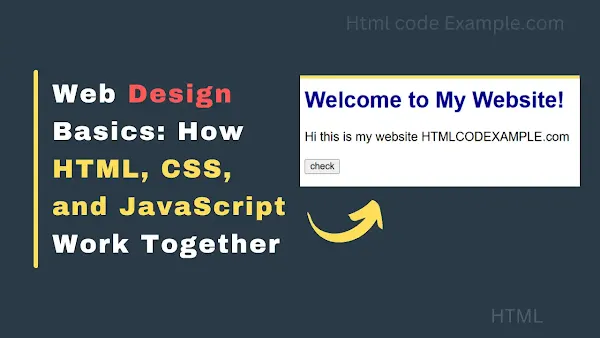Hey there! So, you’re curious about web design?
That’s fantastic! Whether you’re dreaming of building your own website, exploring a career in tech, or just want to understand how the internet works, you’re in the right place. Let’s break down the basics of web design and explore how HTML, CSS, and JavaScript come together to create the websites you use every day. Don’t worry I’ll keep it simple, clear, and fun!
What is Web Design?
Web design is the process of creating websites that are visually appealing, functional, and user-friendly. Think of it like building a house:
- HTML is the foundation and structure (the walls and roof).
- CSS is the design and aesthetics (the paint, furniture, and decor).
- JavaScript is the functionality and interactivity (the lights, plumbing, and gadgets).
1. HTML: The Backbone of Your Website
HTML (HyperText Markup Language) is the starting point for every website. It defines the structure and layout of your content.
<!DOCTYPE html>
<html>
<head>
<title>My First Website</title>
</head>
<body>
<h1>Welcome to My Website!</h1>
<p>Hi this is my website HTMLCODEXAMPLE.com</p>
<button>Check</button>
</body>
</html>
2. CSS: The Style and Beauty
CSS (Cascading Style Sheets) is what makes websites look stunning. It controls the colors, fonts, layouts, and overall visual appeal.
body {
background-color: #f4f4f4;
font-family: 'Arial', sans-serif;
}
h1 {
color: #333;
text-align: center;
font-size: 36px;
}
p {
color: #666;
font-size: 18px;
line-height: 1.6;
}
3. JavaScript: The Brains and Interaction
JavaScript makes websites interactive and dynamic.
let button = document.querySelector("button");
button.addEventListener("click", function() {
alert("Hey there! Thanks for clicking the button!");
});
How HTML, CSS, and JavaScript Work Together
Imagine you’re building a website for a coffee shop:
- HTML defines the structure: a heading, a paragraph, and an image.
- CSS styles it: colors, fonts, and layout.
- JavaScript adds interactivity: clicking a button opens a form.
Tips for Learning Web Design
- Start with the Basics: Focus on HTML first, then move on to CSS, and finally JavaScript.
- Practice Regularly: Build small projects like a personal blog, a portfolio, or a landing page.
- Experiment and Have Fun: The best way to learn is by doing!
Done.!
Web design might seem intimidating at first, but once you understand the basics of HTML, CSS, and JavaScript, you’ll see how creative and rewarding it can be. With a little practice and patience, you’ll be creating your own websites in time!


